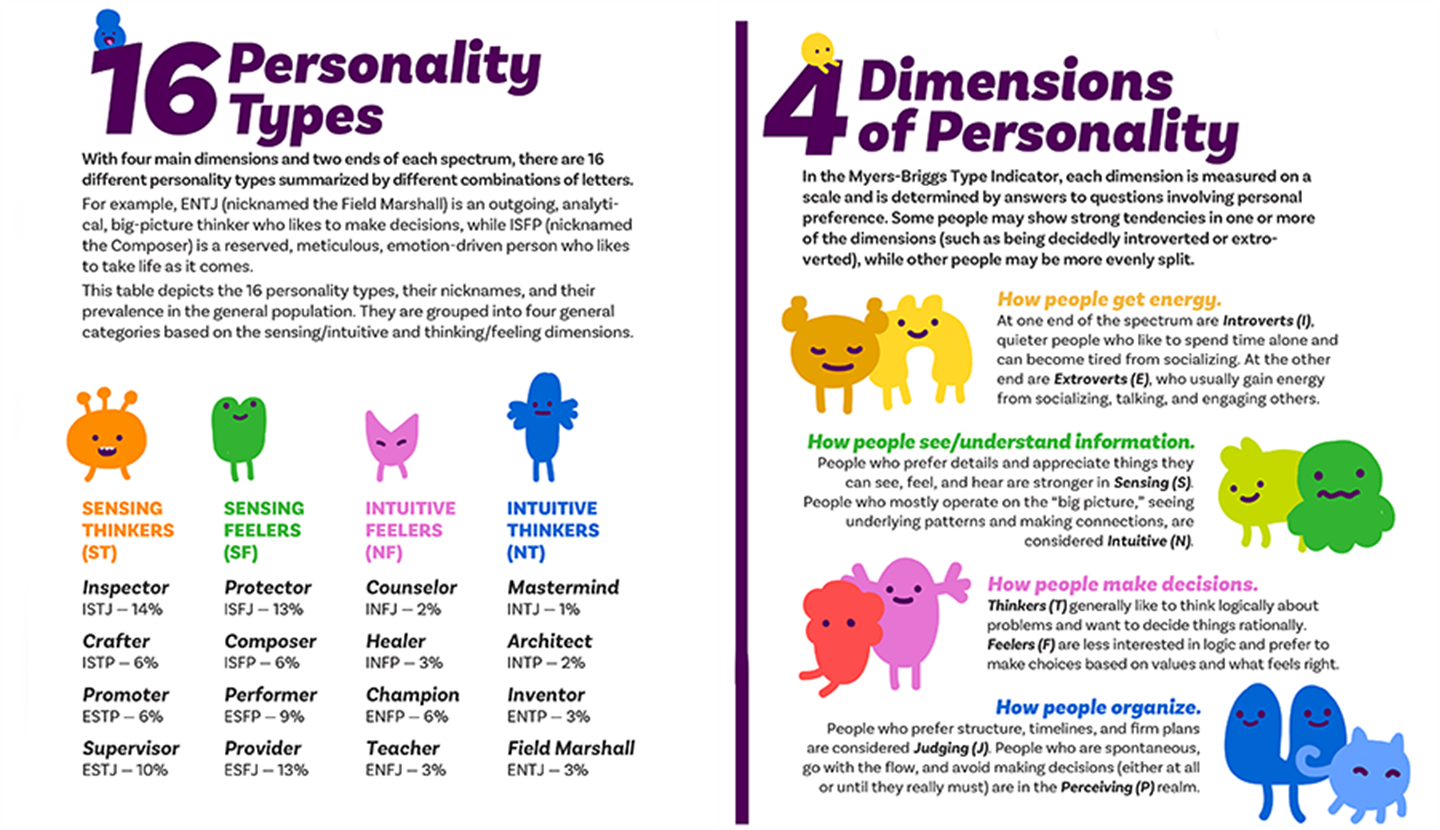Understanding personality types can help internal auditors better manage their teams and themselves.
Find out which two personality types are the most common within the profession and why teams should look to add more uncommon types.
Articles James C. Paterson, CIA Feb 06, 2023
Find out which two personality types are the most common within the profession and why teams should look to add more uncommon types.

Personality plays a key role in being able to lead and influence effectively. The same is true for being able to pick up on other people’s tendencies and traits and “tune in” to what is needed.
For the past 12 years, I’ve worked as an internal audit consultant and trainer. Before that, I was the global CAE of AstraZeneca, and earlier I worked in human resources and finance. Most recently, I’ve been helping internal auditors work on changing their mindsets, influencing and managing stakeholders, and developing political savvy. In all this work, the importance of having self-knowledge and an awareness of other personalities is crucial.
In working with IIA affiliates and clients in Europe, I have used the Myers-Briggs Type Indicator, a personality profile tool, to dig deeper into audit team opportunities and challenges (see “The 4 Dimensions of Personality” on this page). In coaching discussions, test results can support conversations about people’s strengths and potential blind spots. The MBTI also can be used to explain how teams develop and how personality is involved when trying to engage others — as well as why people might get along better with some types and less well with others.
Now after conducting more than 350 Myers-Briggs surveys with internal auditors, it is timely to consider: Is there a typical internal auditor personality? And if so, can an understanding of internal audit personality types help CAEs better manage their teams or even work more effectively with stakeholders?

I found two dominant personality types among the internal auditors with whom I’ve worked: ESTJ and ISTJ. The proportions can vary from team to team, but in the teams I observed, there were about twice as many ESTJ and ISTJ personality types than one might see in the general population.
The Supervisor (ESTJ). Also known as “life’s administrators,” people with this personality type work in a systematic, disciplined way, paying close attention to detailed information and looking for logical solutions to any shortcomings on a timely basis. As extroverts, ESTJs like to engage with others regularly.
The Inspector (ISTJ). Also known as “the detectives,” these people are more introverted than ESTJs and happy to work independently. But they are similar to ESTJs in many other ways, including paying close attention to details, working in a disciplined manner, and wanting to analyze and decide things logically without undue delay.Digging deeper into each dominant personality type reveals additional interesting findings that lead to some practical implications for the profession.
Introverts and extroverts. In my sample, more of the internal auditors are extroverts (53%), but there are many who are introverts (34%), with 13% evenly split. This means there will be those who want to take over internal audit team meetings and others who may find it challenging to be heard.
Because introverts may be less likely to talk in team meetings, they may need encouragement. One strategy I often suggest is asking: “Does someone who hasn’t spoken yet want to offer their view?” Introverts may need time to reflect on a topic before feeling comfortable enough to offer an opinion. Allowing them to see papers in advance or giving them time to think about proposals until the next day are tactics that can help.
Sensing over intuition. Most internal auditors (70%) are the more detail-focused, sensing personalities (S). This is good for audit work, but people with this trait may be more challenged to see and explain how details fit into the big picture. Having many detail-oriented people on an internal audit team also may mean conversations, communications, and internal paperwork (methodologies, templates, etc.) can get bogged down.
When managing work, the risk of over-analysis should be recognized and proactively managed. This is one reasons why lean and agile ways of working can be helpful, because these methodologies provide a framework to counterbalance a tendency to over-engineer things.
Thinking over feeling. A significant majority of the internal auditors surveyed are likely to tackle problems from a logical, thinking (T) perspective (64% are thinking-dominant on average, with only 22% as feeling-dominant). People with this personality preference may overestimate the power of rational persuasion as an influencing style. While logic is vital in audit engagements, many managers don’t make decisions this way, so persuasion strategies beyond “rational persuasion” may be needed. Those with a thinking personality type may also need to be more mindful of the importance of networking, context, and other people’s agendas.
Judging over perceiving. A clear majority of auditors (69%) I have worked with are judgers (J). They usually like to plan with precise timelines, they like clear policies and procedures, and they prefer to make firm decisions without undue delay. However, this means they may be more inclined to think audit clients (often with different personalities) lack rigor and discipline. The converse is that audit clients think some internal auditors are too rigid and inflexible when discussing how and when to improve things.
No internal audit team I work with is ever shocked to learn that it (and audit teams in general) chiefly comprise certain personality types. It seems natural that certain types are attracted to audit work. But this also means that internal audit teams may lack auditors with personality types who could offer valuable perspectives on problem solving or engaging with clients. For example, a colleague with a preference for feeling may help colleagues think more carefully about their influencing strategies throughout an assignment.
As a profession with many STJ people, internal auditing may over-value knowledge and training activities around data, technology, and technical frameworks (COSO, COBIT, etc.) and underestimate the importance of team development and ways of working, such as how to operate as a high-performing team. Likewise, I have seen many teams who need to learn different methods of influencing others.
It’s also valid to look at whether clear enough connections are being made between audit work and big-picture questions around strategy and culture, with so many detail-oriented personalities on the team. Employees with a more intuitive personality type could help the team uncover root causes driving specific findings and tie them to strategic priorities.
Further, the CAEs I work with often cite “critical thinking” and “putting concerns into context” as skills they want their teams to develop. Understanding the composition of personality types on the team helps clarify the need to work on internal auditor mindsets. These entrenched mindsets often explain performance issues around audit delivery, relationships with audit clients, contributions in high-stakes meetings (where group dynamics are present), and the clarity and brevity of audit reports.
The critical topic of diversity and inclusion can be linked to personality profiles, as well. Teams with a gap in the way they see specific topics (due to a need for certain personality types), may need to look at their recruitment process. Underpinning all of this is a need for a culture that embraces diversity and does not feel threatened by it.
Having a better understanding of who internal auditors are can help those in the profession face future challenges better prepared. In addition, and closer to home, an improved understanding of one’s own personality traits can significantly improve personal impact, job satisfaction, and career prospects.